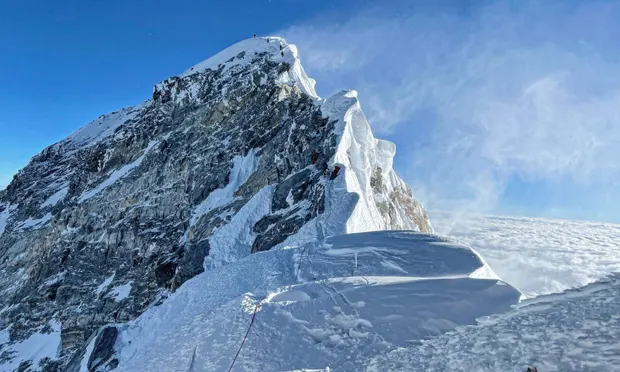Experts have said that this is likely to be one of the deadliest years on record on Mount Everest, with variable weather caused by climate change being blamed as one of the main reasons for the deaths of up to 17 people.
A total of 12 people have been confirmed dead during Everest expeditions this season while another five remain missing and presumed dead, as no contact has been made for at least five days in all cases, according to the Himalayan Database, which tracks mountain fatalities.
The figure was confirmed by Yuba Raj Khatiwada, the director of Nepal’s tourism department. “Altogether this year we lost 17 people on the mountain this season,” he said. “The main cause is the changing in the weather. This season the weather conditions were not favourable, it was very variable. Climate change is having a big impact in the mountains.”
According to reports, the development makes this year one of the worst on record for deaths on Everest, matched only by the events of 2014 when 17 died, most of whom were local sherpas killed in an avalanche. On average, between five and 10 people die on Everest every year but recent years have seen a spike.
Among those who lost their lives climbing Everest this year were Jason Kennison, a 40-year-old mechanic from Australia who had overcome spinal injuries to climb to the top but could not make it back down, a Canadian doctor, Pieter Swart, and three Nepalese sherpas who died in an avalanche in April.
Available report show that those who remain missing include solo Hungarian climber Suhajda Szilárd, who scaled the mountain without a sherpa guide or additional oxygen, and an Indian-Singaporean climber who is feared to have fallen off the mountain.
This year has been more deadly than 2019, after images went viral of overcrowding and “carnage” on Everest, with hundreds of climbers waiting up to 12 hours to scale the mountain and reports that people were forced to clamber over bodies and incapacitated climbers. A total of 11 people died that year.
Story was adapted from the Guardian.
